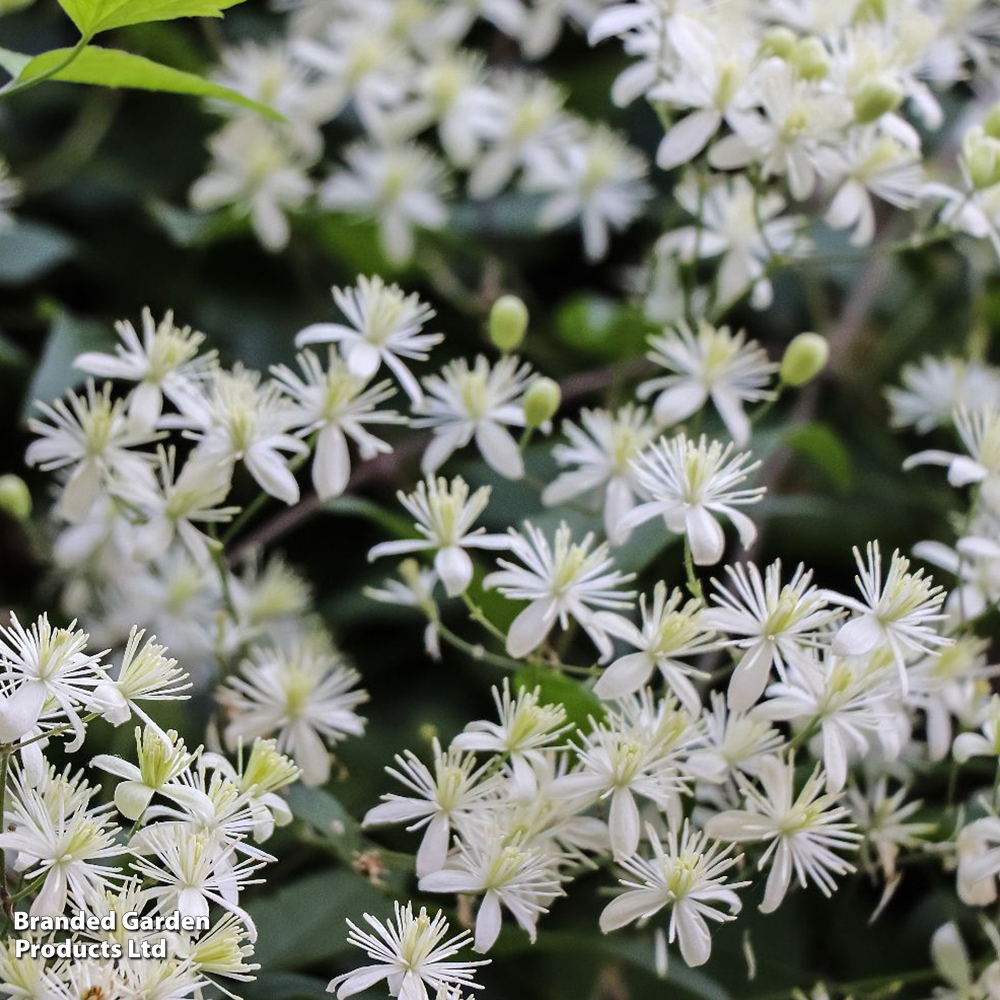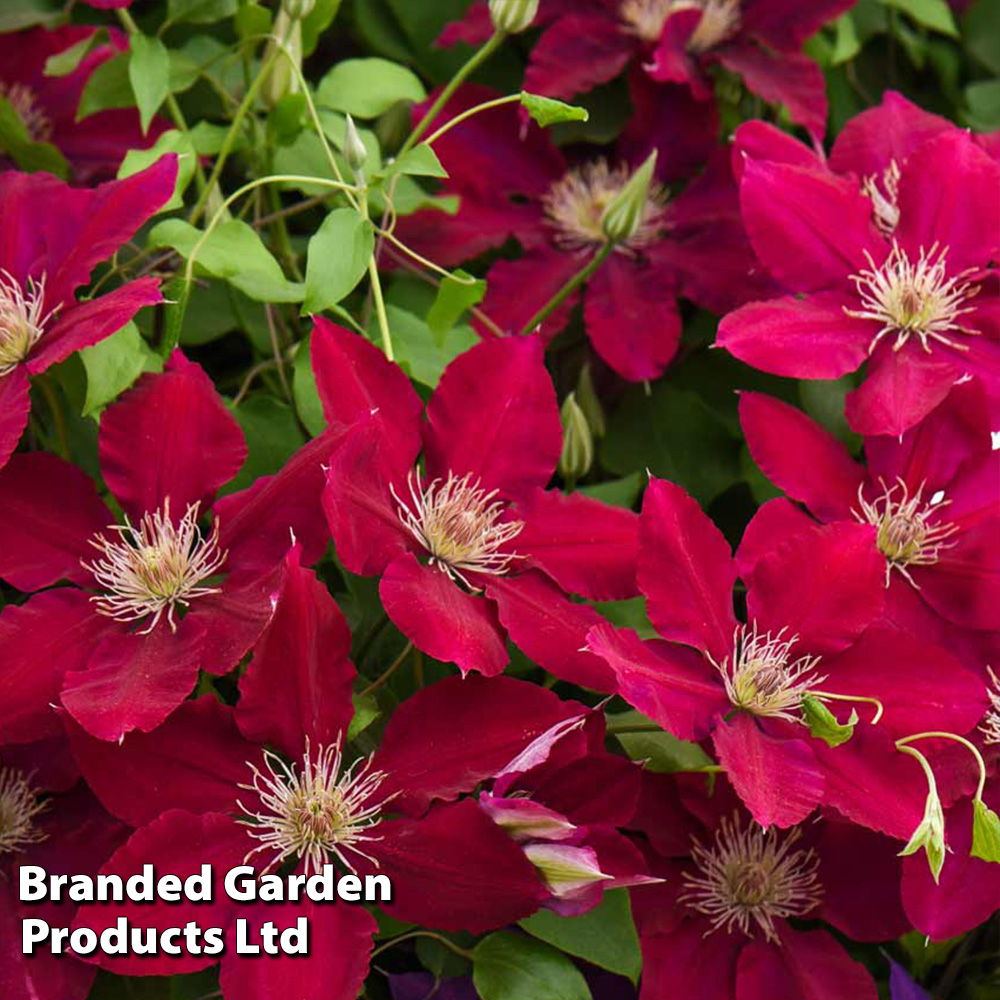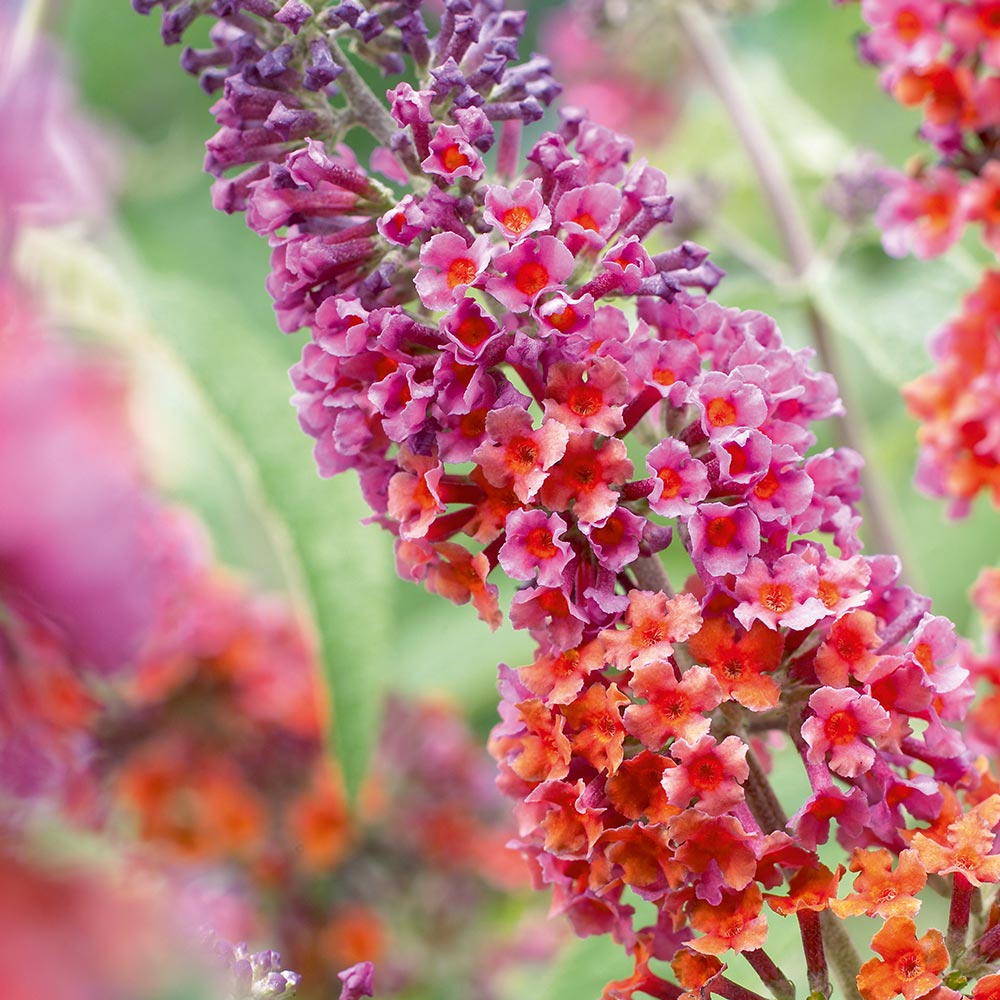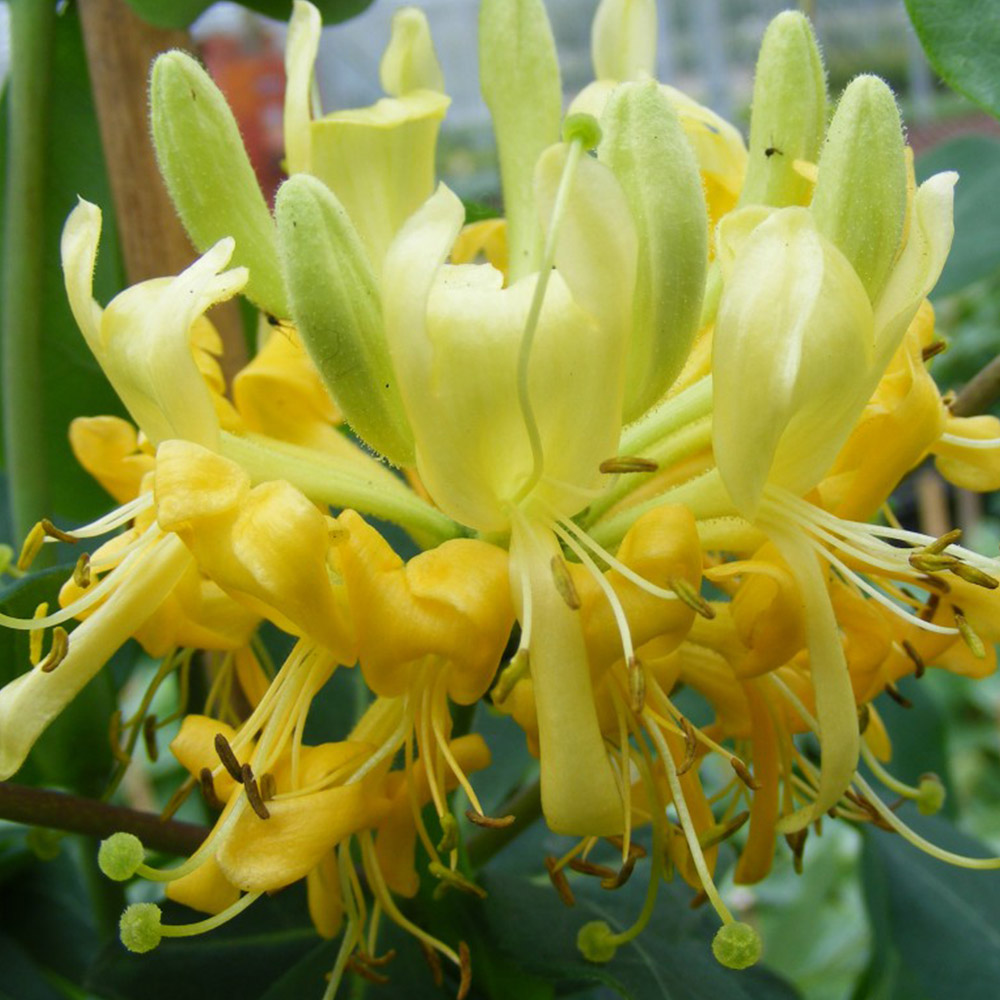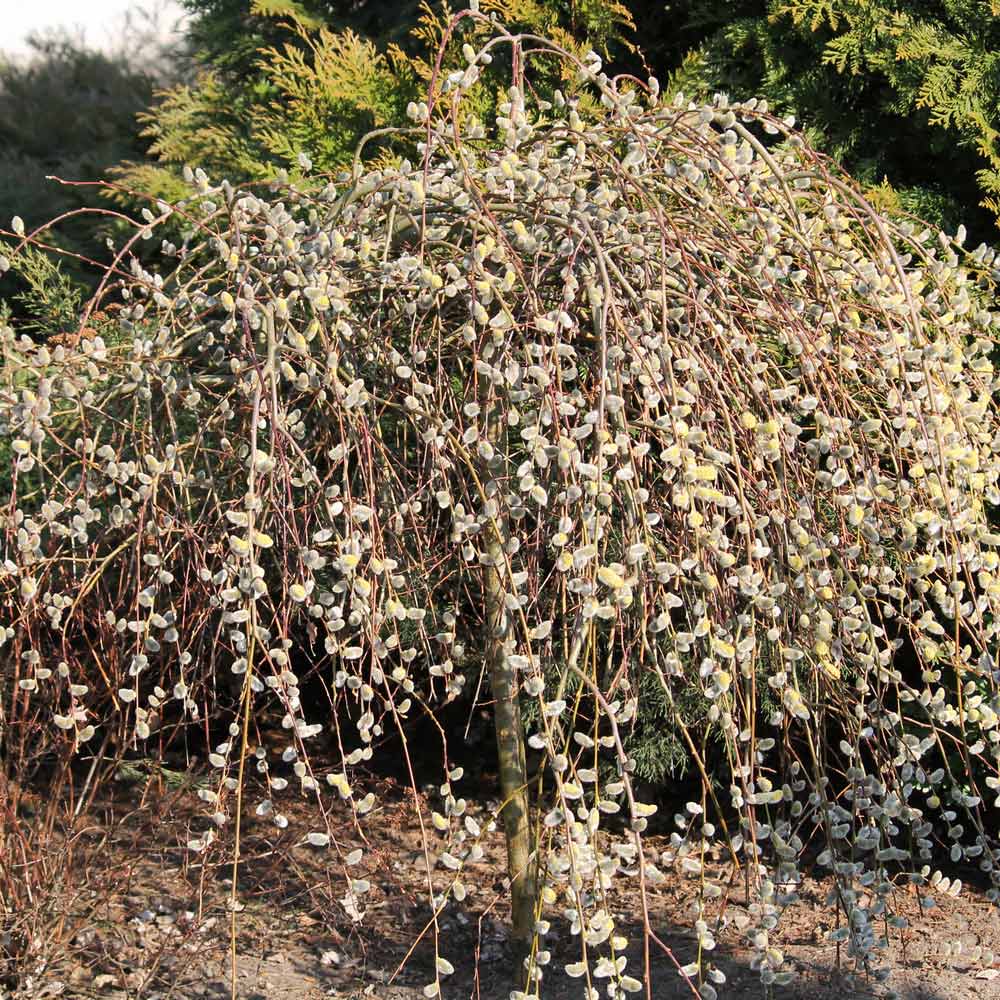Better known as Traveller’s Joy and Old Man’s Beard, Clematis vitalba is a wild clematis native to the UK and is commonly seen scrambling through trees and hedges. From midsummer to September it bears an abundance of small, starry green-white blooms with fluffy stamens and a gentle almond fragrance. Clematis vitalba is ideal for a wildlife garden where its flowers will attract plenty of pollinating insects, such as bees and hoverflies, the foliage is a great food source for many species of moths and the seeds are adored by birds such as goldfinches. Once the flowers have faded they will leave beautiful silky seedhead balls which will continue into the winter and look spectacular when backlit by the low winter sun. Pruning group 3.Maximum height: 4-8 m. Spread: 2.5-4m.
Growing Information
When planting clematis, choose a position in sun or semi-shade and plant the climber deeply in moist, fertile, well drained soil. Position the top of the rootball at a depth of 7.5cm (3″) below soil level, to encourage new shoots to form from the base of the plant. Clematis dislike soils that are particularly wet or dry. Such soils can be improved by the addition of plenty of well rotted manure or garden compost. When growing clematis in patio containers use a soil based compost such as John Innes No.3. Train clematis plants onto a suitable support such as trellis, wires or a freestanding climbing frame.

